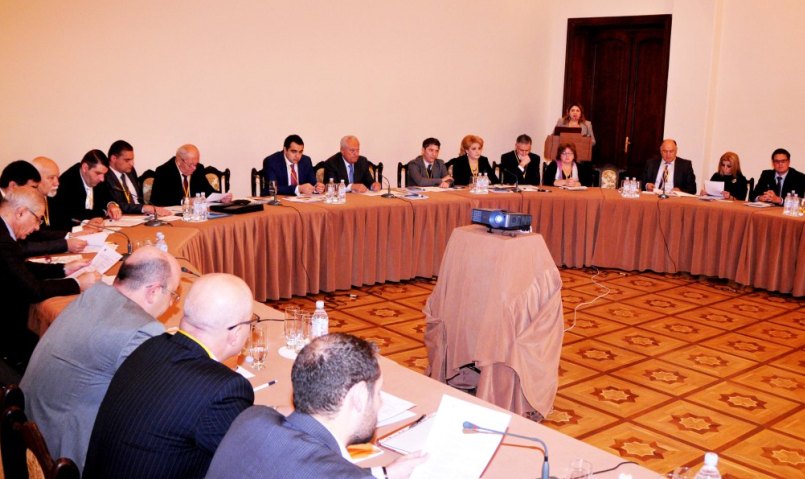 MINISTRY OF ENERGY INFRASTRUCTURES AND NATURAL RESOURCES OF THE REPUBLIC OF ARMENIA
MINISTRY OF ENERGY INFRASTRUCTURES AND NATURAL RESOURCES OF THE REPUBLIC OF ARMENIA

On November 11, by the initiative of the Ministry of Energy and Natural Resources and Renewable Energy and Energy Efficiency Fund of Armenia was held a conference related to the problems, prospects and the development possibilities of the small HPP sphere.
The conference was attended by the representatives of the small hydropower plants, international and non-governmental organizations.
Before the discussion, there was presented the Armenian experience of small hydropower development, which is viewed as unprecedented.
Over the past decade in different provinces of the country were been built more than 150 small HPP, which were privately-owned and managed by the private sector.
By the October 1, 2014, there have been worked on of 162 SHPP, about 277 Mgv capacity in the country.
According to the licenses provided, 65 small hydropower plants, with a project capacity of 131 Mgv, today in the construction phase.
The pledge of these achievements was the stimulating state policy and conducive environment for investment, which was once formed by the participation of various interested structures and the international donor community support.
The Minister of Energy and Natural Resources Yervand Zakharyan thanked the representatives of small hydropower plants for the works done and investments.
According to the Minister, small hydropower plants in Armenia can be considered the established business, but that does not mean, that there are not problems and concerns about the preservation of results achieved, of future development and stability ensuring of this sector.
-Today is more than important, that the hydropower potential, which is the own resource of our country, have been used fully, with maximum efficiency and using technologies with minimum environmental impact, said Yervand Zakharyan.
-It's obvious, that the small hydropower plants promoted and still promote Armenia's energy independence and security increasing, and now it's time once again to revert to the current problems and find the best offers for the planning and implementation of the reforms of legislative and administrative procedures.
According to Yervand Zakharyan, the most bothersome problem of the energy system is the electricity underproduction by the HPP: It means, that they produce less electricity than it is calculated and programmed by the Public Services Regulatory Commission.
Thus, from January 1 to 31 December of 2013 period by the small hydropower plants have been produced 80 million kWh less electricity.
From July 1, 2013 to June 31, 2014 / in margin year / have been underproduction of electricity about 176 million kWh, and from 1 January 2014 until the end of this year, according to the forecasts, the deficit will amount to 186 million kWh.
As a result, instead of small hydropower plants’ cheap electricity the Armenian electrical networks receive relatively expensive electricity.
The amount difference of not produced and supplied electric power during the 2013, was 1 billion and 253 million AMD.
For the margin year of 2014 / from August 1 until 2015, July 31 / expected damage will be 3 billion and 680 million AMD.
-These amounts are forming as damages in ENA balance, which the Commission subsequently forced provides to the tariff and adds the burden of society, said Yervand Zakharyan.
-Of any 1 kW/h of not produced electricity the public is paying in the form of tariff.
The impact of not produced electricity by you on electricity tariff will be 0.66 AMD per 1 kWh.
All of this is accumulating, and then we wonder why and how tariffs have risen. Today's requirements are completely different. We have put strict requirements for ENA, and the public demand from them, too. But we all have our shortcomings in this matter, said the Minister.
Within the framework of the conference also have been discussed the vision of the further development of SHPPs, the SHPPs development and operation prospects for a guaranteed 15 years after the date of purchase, as well as the innovations of legislative regulation of SHPPs technical problems.